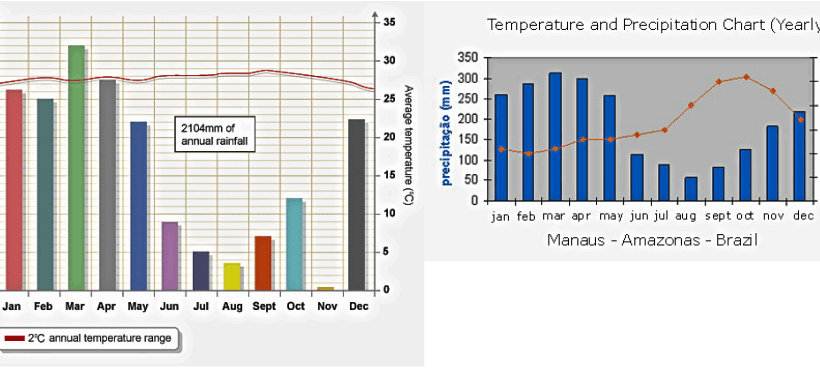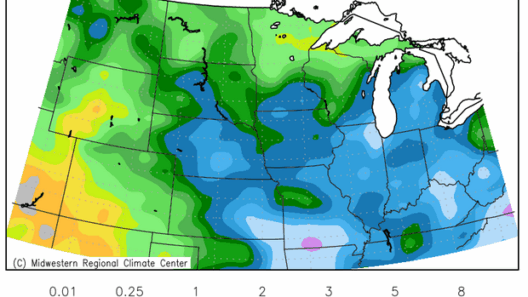The climate of a rainforest is a mesmerizing tapestry woven with threads of moisture, warmth, and vitality. When one conjures the image of a tropical rainforest, it’s hard not to envision a realm where sunlight filters gently through emerald canopies, creating a symphony of light that dances across the forest floor. This enchanting atmosphere is sculpted predominantly by the interplay of precipitation, temperature, and humidity.
Tropical rainforests, positioned near the equator, are characterized by their astounding abundance of precipitation. These regions receive an annual rainfall of more than 80 inches, and in some locales, it can exceed an astonishing 400 inches. The rainfall is not sporadic; instead, it descends in a jubilant cascade, often as heavy downpours that collapse rhythmically in stunning bursts of thunder. The clouds, swollen with moisture, create a theatrical performance, where nature’s drumroll ushers in torrential downpours that fill streams and saturate the soil.
These climatic conditions sculpt the unique ecosystems within tropical rainforests. The sheer volume of rainfall transforms the ground into a lush, thriving environment, where rich, loamy soil nourishes myriad plant species. The understory brims with life, from ferns to saplings, all vying for their share of sunlight. Above, towering giants reach skyward, their leaves forming a dense canopy that plays host to a diverse array of organisms, making these forests some of the most biodiverse on the planet.
Temperature accompanies precipitation in defining the rainforest’s climate, creating a perpetual summer. In these regions, the average temperature hovers between 68°F to 93°F (20°C to 34°C), rarely dipping too far from this warm embrace. This warmth is a double-edged sword; while it envelops the rainforest in a tropical embrace, fostering unparalleled biological diversity, it also dictates the rhythm of life. From the smallest insects to the greatest mammals, each organism dances to this climatic heartbeat.
Humidity serves as yet another defining characteristic of the rainforest climate. Often exceeding 80%, the air is saturated with moisture, invoking an almost tangible sensation. This humid atmosphere acts like a greenhouse, locking in heat and moisture, creating a microclimate that sustains a plethora of life forms. The breath of the rainforest is heavy and aromatic, rich with the smell of damp earth and growing vegetation, a bouquet that encapsulates the vitality of life.
Yet, the balance of this ecosystem is delicate. Climate change threatens to domino this finely tuned climate, altering rainfall patterns, raising temperatures, and shifting the balance of biodiversity. The sustainability of these vibrant ecosystems hinges on the continuation of their current climatic conditions. Disruptions can lead to droughts, which, counterintuitively, may flood the very same soil that sustains this thriving biome. The consequences ripple not only through the forests but also through the globe, impacting climate systems far and wide.
One might picture the rainforest as a living canvas, painted with every hue of green imaginable. Every shade, from the deep forest greens of ancient trees to the vibrant lime of new growth, is a testament to life flourishing in tandem. The saturation of life forms in tropical rainforests is an ecological treasure trove. The rich biodiversity represents intricate webs of interdependence, where every species contributes to the ecological equilibrium. **Just as an artist blends colors on a palette, the climate crafts a mosaic where each organism plays a crucial role.**
The allure of tropical rainforests is fortified not only by their vibrant life but also by their intriguing climates. The interspersion of sun and rain creates a phenomenon known as the *’bromeliad effect’;* plants such as bromeliads collect rainwater in their leaves, creating microhabitats for frogs, insects, and other creatures. This symbiotic relationship is a striking reminder of the ingenuity of nature, where the climate fosters complexity within simplicity. It mirrors the way a conductor leads an orchestra, where each instrument’s contribution is vital to craft a harmonious performance.
In moments of tranquillity, one can hear the melodies of the rainforest; birds trill and call from their lofty perches while insects hum a symphony of sounds. The very essence of life here is wrapped in the sounds of dripping water and rustling leaves, underscoring that this is not merely a backdrop but an active participant in its own narrative. As a protective guardian, the rainforest plays a significant role in regulating the Earth’s atmosphere, consuming carbon dioxide and releasing oxygen, thereby breathing life into our world.
In conclusion, the climate of tropical rainforests is a vibrant, multifaceted force. Mystical storms, unwavering warmth, and intoxicating humidity converge to create an environment that is nothing short of miraculous. These lush ecosystems are not only remarkable in their beauty but are also crucial in the global climate system. The juxtaposition of the verdant growth with the looming threat of climate change serves as a clarion call for conservation and awareness. Preserving these rainforests is essential not only for the myriad species that inhabit them but also for humanity’s survival itself. The rhythmic pulse of a rainforest reflects the heartbeat of our planet, urging us to pay attention and take action before it is too late.







